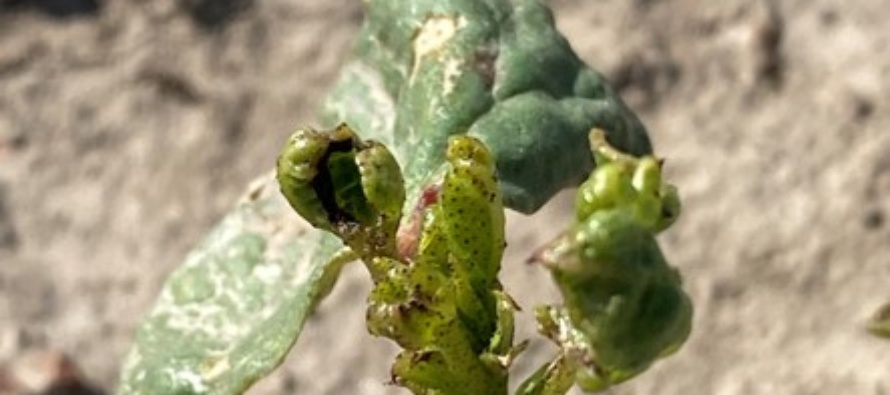2023 Foliar Insecticide Recommendations for Thrips Management

Related Articles
- Calcium and Magnesium For Mississippi Crops 1
- March 11 Precision Agriculture Workshop 0
- Ground Speed Affects Spray Droplet Deposition 0
Latest Tweets
With the development of resistance to seed treatments, foliar thrips applications are becoming increasingly common. At this point in the growing season, thrips populations are quickly increasing. There have been a number of acres that have already received at least one foliar application and some acres that may receive a second. We recommend treating when you find an average of one thrips per plant with immatures present. Generally, when immatures are present this is a good indication that seed treatments are no longer providing control. In recent years, where we have extremely high thrips numbers, in some situations you may need to treat based solely on adults. Rarely applications are needed after the four leaf stage, however, in recent years there have been a few occasions where it was warranted. It will be important to let the plant guide your decision-making process. If there are numerous thrips per plant present, but the plants are developing well and look healthy, I would not recommend treating. However, if you have numerous thrips present and the newest leaves are showing damage, I would consider making an insecticide application. It is going to be important to base your decisions on the damage found on the newer parts of the plants, do not make your decisions based on old damage.
At this time, MSU extension is only recommending the use of Intrepid Edge. If you chose to use something like Orthene and Bidrin be mindful that you may not get acceptable control, however in some areas either product has worked.
Radiant/Intrepid Edge:
Strengths: Currently provides the best control. Less likely to flare secondary pests.
Weaknesses: Tends to be more expensive compared to other options. Needs an adjuvant.
Orthene (Acephate):
Strengths: Relatively inexpensive, more flexibility.
Weaknesses: Decreased efficacy over the last few years. Only seeing 50 to 60% control on some populations. If aphids or spider mites are present, even in low numbers, has the potential to flare secondary pests.
Bidrin:
Strengths: Less likely to flare spider mites and aphids
Weaknesses: A little more expensive, and in some places we have also seen a decrease in efficacy with this product since it does have the same mode of action as Orthene.
There are a few things to consider when making a management decision, including cost, the level of control, and the impact on other pests. For example, Orthene and Bidrin provide relative similar control. However, Orthene is more likely to flare secondary insects compared to Bidrin. The majority of acres at this point have been treated with Radiant or Intrepid Edge. Even though this product does a great job, these fields may still require a second application anywhere from 5 to 7 days after simply due to the high thrips pressure. This may be something to consider in situations where more than one application may be needed.
As cotton progresses beyond the fourth leaf stage, pay close attention to the new leaves as they emerge, as well as the number of thrips present. Remember the goal is to spray only when absolutely necessary.




Let me tell You a sad story ! There are no comments yet, but You can be first one to comment this article.
Write a comment